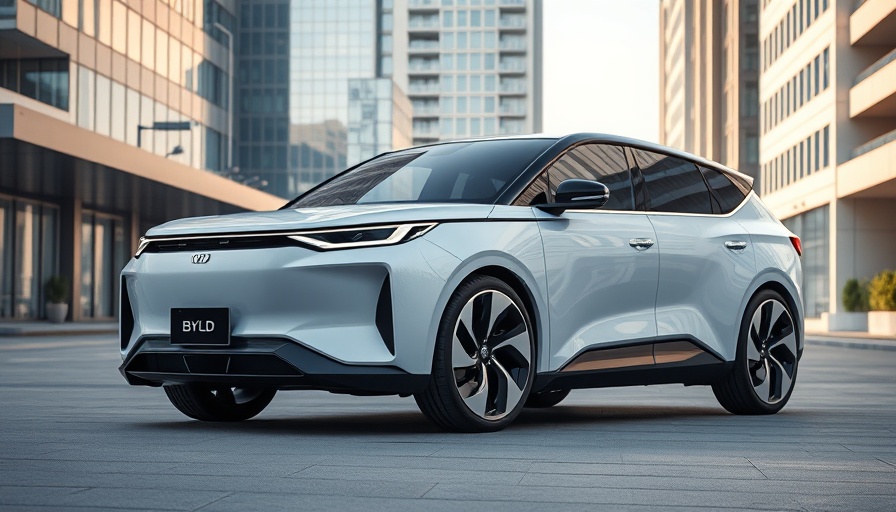
Reimagining the Future of Sustainable Transportation: The BYD Sealion 06
In an exciting leap towards a green future, BYD has officially launched the second generation of its mid-size SUV, the Sealion 06, in China. This vehicle continues the trend of electrification in the automotive sector, appealing not only to technology enthusiasts but also to eco-conscious homeowners and businesses looking to reduce their carbon footprint. Priced at approximately €16,600 for the base electric version, the Sealion 06 signals BYD's commitment to providing accessible electric mobility solutions.
Specifications That Impress: Performance Meets Practicality
The Sealion 06 is built on BYD’s innovative “e-platform 3.0 evo,” improving on its predecessor with a sleeker, more refined aesthetic. Notable design features include split headlights and integrated air curtains that enhance its aerodynamics. With dimensions of 4.81 meters in length, the new model offers a more spacious interior that includes a generous boot capacity of 757 liters, expanding up to 1,630 liters with seats down. This flexibility makes it both a family-friendly vehicle and an appealing option for businesses requiring transport solutions.
Powering the Future: Advanced Powertrain Configurations
As a testament to BYD's dedication to innovation, the Sealion 06 comes equipped with a variety of powertrain options. The fully electric variant boasts power outputs ranging from 170 to 310 kW for performance-oriented versions, making it suitable for various driving styles.
The Plug-in hybrid (PHEV) versions are particularly noteworthy. By integrating large-capacity Blade batteries, the Sealion achieves range capacities that provide an extended range, potentially up to 1,670 kilometers when combining electric and combustion capabilities. Such metrics will likely meet the needs of consumers looking for practicality and sustainability.
Battery Technology: Paving the Way for EV Adoption
The Sealion 06 employs BYD's renowned Blade batteries with LFP chemistry, featuring capacities between 65.3 and 78.7 kWh. This technology not only enhances the vehicle’s range—CLTC estimates suggest 520 to 605 kilometers, depending on configuration—but also reinforces BYD's role as a leader in the battery innovation space. Homeowners and businesses can consider the integration of home charging solutions for electric vehicles, including the possibility of solar-powered charging stations that work harmoniously with such innovative vehicles.
Implications for the European Market: A New Era of E-Mobility
As BYD eyes expansion into the European market, the introduction of the Sealion 06 raises questions about pricing dynamics and consumer integration challenges. While the base model is competitively priced within China, significant tariffs on imported vehicles could lead to higher costs for European consumers. However, BYD's proposal to manufacture vehicles locally in Hungary could mitigate this hurdle, allowing for more attractive pricing and expanded market accessibility.
For European supporters of electric mobility, the Sealion 06 may represent an important step towards practical and profitable electric vehicle usage.
Living Green: Embracing Sustainable Choices
The BYD Sealion 06 crossover SUV exemplifies how modern automotive design and green technology can harmoniously coexist, appealing to the growing demographic interested in sustainability. By converting to electric or hybrid vehicles, consumers not only lessen their environmental impact but also gain access to modern conveniences, cost savings through energy efficiency, and the potential for grid independence through home solar integration.
Conclusion: A Call to Action for Eco-Conscious Consumers
The launch of the Sealion 06 is not merely a step forward for BYD; it is a profound indication of the automotive industry’s shift towards electric mobility and green energy solutions. As the world moves towards sustainable living, consider how adopting electric vehicles and solar energy systems can play an essential role in that transition. By preparing for the future with conscious consumer choices today, homeowners and businesses can turn towards eco-friendly practices that contribute positively to our planet.
 Add Row
Add Row  Add
Add 



Write A Comment